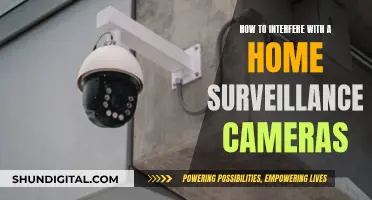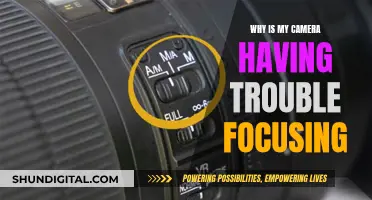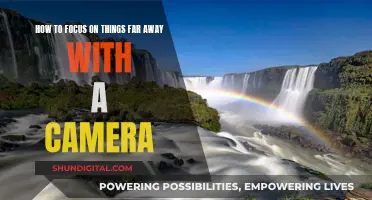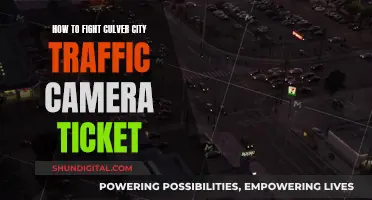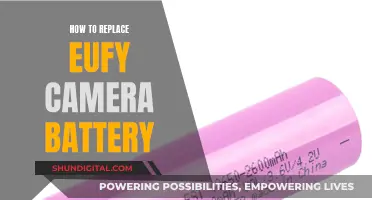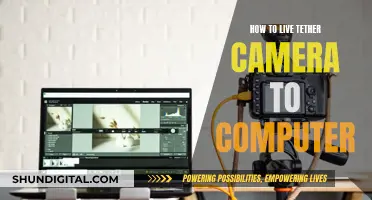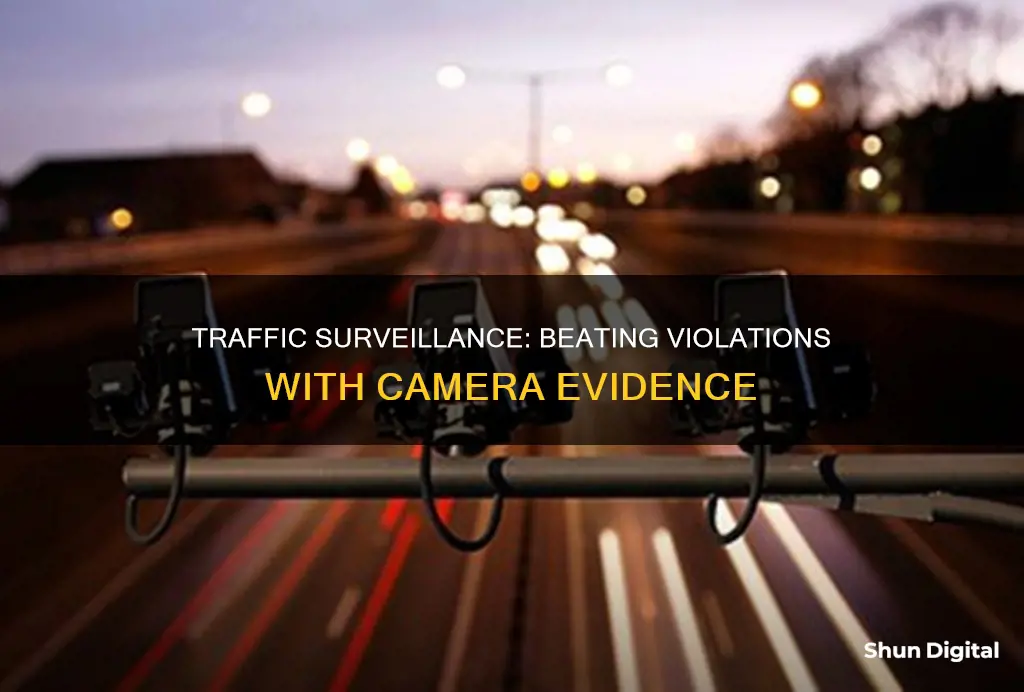
Traffic cameras are an increasingly common method of enforcing road rules, with many jurisdictions adopting their use. These cameras are often used to monitor and detect speeding, red-light running, unauthorised use of bus lanes, and vehicles inside congestion charge areas. While these cameras are generally accurate, they are not perfect and can sometimes be challenged.
If you receive a traffic violation notice from a camera, there are several steps you can take to dispute it. Firstly, examine the details of the ticket, including the date, time, and location, to confirm that you were indeed driving the car when the violation occurred. If someone else was driving, you may not be liable. Additionally, review the photos and videos provided as evidence to ensure they clearly show your vehicle and any violation. Blurry or unclear images may be grounds for dismissal.
You can also explore legal options by consulting a lawyer, as there may be special circumstances or technicalities that could help your case. For example, you can challenge the admissibility of the photo as hearsay or argue that your right to confront witnesses has been violated if no one from the camera maintenance company testifies in court.
It is worth noting that the laws regarding traffic cameras vary across different jurisdictions, so be sure to research the specific laws in your area. While fighting a traffic camera ticket may be challenging, it is not impossible, and with the right approach, you may be able to successfully dispute the violation.
| Characteristics | Values |
|---|---|
| Camera type | Red light camera, speed camera, bus lane camera, etc. |
| Camera location | Mounted beside or over a road, installed in an enforcement vehicle, hidden in garbage bins, etc. |
| Camera function | Detecting motoring offenses, including speeding, vehicles going through a red traffic light, toll booth evasion, unauthorized use of a bus lane, etc. |
| Camera activation | Motion-activated, triggered by a vehicle entering an intersection, or by a sensor in the road |
| Evidence | Photos or videos of the violation |
| Evidence issues | Blurry photos, unclear license plates, lack of photos/videos of the driver, etc. |
| Evidence requests | Requesting maintenance records for the camera and traffic light/monitoring system to check accuracy |
| Applicable laws | Laws regarding the use of surveillance cameras, warning sign requirements, necessity defenses for speeding, etc. |
| Legal options | Admitting responsibility, contesting the ticket, hiring a lawyer, attending traffic school, etc. |
What You'll Learn

Obscure your license plate with reflective paint
Reflective spray paint designed for use on license plates can be an effective way to obscure your license plate from surveillance cameras. This method leverages retroreflection, a unique optical property where light is directed back towards its source rather than scattering in different directions. When light—especially direct light like that from headlights—hits the treated plate, the reflective particles bounce the light back towards the light source, making the license plate appear much brighter and harder to capture on camera.
The legality of using reflective sprays on license plates varies by jurisdiction. In the United States, for example, regulations governing license plates are often set at the state level. Some states may explicitly allow the use of reflective sprays, while others may prohibit or restrict them. It is crucial to consult the specific laws of your state or region before applying reflective spray to your license plate.
It's important to note that even if you use reflective spray, high-end traffic cameras with special technology can still read your license plate. These cameras use infrared laser or high-band infrared technology, which is immune to reflective coatings. Additionally, some jurisdictions may have concerns about reflective sprays interfering with automated license plate recognition (ALPR) systems used by law enforcement.
When applying reflective spray, follow the manufacturer's instructions for preparation, application, and drying times. Ensure you don't overspray or apply too much product, as this can make the license plate excessively reflective during daylight hours, impairing visibility.
While reflective spray on license plates can provide a degree of anonymity, it is important to consider the ethical implications. Misusing this technique to intentionally obscure your license plate during criminal activities, such as evading tolls or committing hit-and-run accidents, is unethical and may have legal consequences.
Staples: Your One-Stop Shop for Camera Battery Needs
You may want to see also

Obscure your identity
One of the basic principles behind automated traffic cameras is that they must be able to identify the driver. If the camera cannot identify the driver, the driver cannot be penalised. There are a variety of tactics that can be used to obscure your identity from traffic cameras, although these have varying degrees of success.
One method is to cross-register your vehicle with your spouse's vehicle. Another method is to use clothing to obscure your identity when driving. However, if the image captured by the camera looks like you in any way, you will likely still have to pay the fine.
You could also use anti-camera products. There are a number of products on the market today that are designed to foil traffic cameras or radar. Some of them rely on reflective paint. This paint is invisible to the naked eye and is applied to your vehicle's license plate. When viewed through the lens of a camera, this paint obscures your license plate number. However, make sure to check state and local laws as this practice may be illegal in your area. For example, Pennsylvania has outlawed the practice, and other states have considered similar legislation.
Another method is to use a powerful LED (light-emitting diode) to shine directly into the camera lens. This will only work well in the dark, so save it for night-time or enclosed spaces. This method will not make you invisible to the camera, but it will obscure your face. Be careful not to drop the light beam from the camera lens, and remember that this method is not subtle – the sudden flash of light will likely alert any vigilant guard to your presence.
You could also use an infrared laser, pointing it directly into the lens of the camera. This method is more subtle than the LED method, but it also requires that you are much more precise. If the laser-point slips away from the lens for even an instant, the camera will capture your face. Act quickly and efficiently to avoid detection. This method should work day or night, although it may be more effective in the dark.
Finally, you could simply disguise yourself. Wear dark glasses, a kerchief, a ski mask, or other face-obscuring garb.
Focusing Your Camera: Kindle Fire Tips and Tricks
You may want to see also

Request a deferred judgement
If you have been caught violating a traffic law by a surveillance camera, there are several options available to you. One option is to request a deferred judgment from the court. This means that the court agrees to delay judging your case for a certain period. If you commit no further infractions during this time, the court will drop the charges. This option is often available to first-time offenders.
A deferred sentence is a way to avoid a conviction on your record and points on your driver's license. It requires you to plead guilty or no contest to the charges and pay the fine and costs. However, the conviction and points are not reported to the Department of Motor Vehicles or your insurance company. Deferred sentences are usually granted for a period of up to twelve months. If you are not convicted of any additional traffic offenses during this time, pay the fine and costs, and comply with any other conditions ordered by the court, the conviction will never enter, and the case will be dismissed.
The process for requesting a deferred judgment will vary depending on your location. In some places, you may be able to request a deferred judgment on or before your first court date in person, by phone, or by mail. In other places, you may need to appear before a judge and make a specific request for a deferred sentence. It's important to check the laws and procedures in your specific jurisdiction.
It's worth noting that a deferred judgment or sentence is not an admission of guilt. It simply gives you the opportunity to avoid a conviction and the associated consequences by complying with certain conditions during the specified period.
Additionally, the eligibility criteria for a deferred sentence may vary. For example, in some places, you must have a clean driving record for the last three years, while in others, you may be eligible with a minor driving history. It's important to review the specific criteria and requirements for your location.
When considering a deferred judgment or sentence, it's always a good idea to consult with an experienced traffic ticket lawyer. They can help you understand your legal rights and options and guide you through the process.
Focusing Your J7 Prime Camera: Tips and Tricks
You may want to see also

Plead not guilty
If you want to dispute a traffic camera ticket, you must plead not guilty. Here are some steps you can take:
Pleading Not Guilty
- Check the date, time, and location of the ticket. Because camera tickets are sent to the owner of the car, confirm that you were driving the car when the ticket was issued.
- Make sure you understand the exact code section you're cited for violating, including the associated penalties for violation.
- Review the photos. If the notification included photos, confirm that it's your car in the photo and that the photo is clear. Blurry photos or unclear license plates may work in your favour.
- Plead by mail or online if possible. Some jurisdictions allow you to respond to the citation by mail or online for less serious traffic violations. You must plead not guilty if you want to dispute the ticket and cannot pay the fine.
- Appear at arraignment. If you have no option but to appear in traffic court, show up at the date and time listed on your citation.
- Request a formal hearing. When you plead not guilty, demand a full formal hearing or trial. This may also require you to attend other hearings such as pre-trial hearings or mediation.
- Request production of documents. Call the local police department or law enforcement agency in charge of the camera to request copies of photos if they were not included with your citation. Also, request full maintenance records for the camera and the traffic light or speed monitoring system to establish that they were regularly monitored and maintained.
Building Your Defence
- Research the applicable law. Look for cases in your city or county about traffic cameras and see if any appellate court decisions have ruled on their legality.
- Raise other possible defences. For example, some states have specific rules about where warning signs must be posted for traffic cameras. If the warning signs were obscured or not present, this could be a defence. Some states also recognise a necessity defence for speeding, where you were speeding to avoid harm to yourself or others.
Presenting Your Case
- Arrive at your hearing with copies of any documents you intend to use as evidence.
- Listen while the prosecutor presents their case. Make notes on anything you want to bring up later, but do not interrupt or speak directly to the prosecutor.
- Challenge the admissibility of the photograph as hearsay. In some jurisdictions, a red light camera photo is considered hearsay and is inadmissible.
- Assert your right to confront witnesses. The Sixth Amendment of the Constitution guarantees you the right to cross-examine witnesses.
- Dispute the authenticity of the photograph. If no one from the company that maintains the camera shows up to testify, object to the use of the photographs for lack of foundation.
- Attack the lack of evidence. If the photos are clear and the judge allows them, but none of them clearly show you driving, argue that the prosecution cannot prove it was you driving the car.
Camera Batteries: Do They Have an Expiry Date?
You may want to see also

Argue that the photo is hearsay
Hearsay is an out-of-court statement presented in court to prove the truth of the matter asserted. In the case of a traffic violation, the photo is an out-of-court "statement" that the prosecution is attempting to use to prove you violated the traffic law.
Hearsay evidence is inadmissible unless it fits into one of the exceptions carved out of the rule. However, there are more than two dozen hearsay exceptions. Some courts have fit traffic camera photos into these exceptions, but others have not. Research the issue to find out if this objection is available in your jurisdiction.
If the photo was not included with your citation, you may need to wait until after your trial is scheduled to request copies from law enforcement.
If the photo is blurry, it may be difficult to confirm that the car is yours. If there's no clearly identifiable photo of you in the driver's seat, you can argue that the prosecution can't prove you were driving.
Keep Your Camera Charged: Tips to Conserve Battery Power
You may want to see also
Frequently asked questions
Some ways to prevent getting a ticket are to use anti-camera products on your license plate, obscure your identity, and avoid violating traffic laws.
You should examine your ticket, plead not guilty, and request a formal hearing.
You can argue that the photo is too blurry to confirm your license plate, that the prosecution cannot prove you were driving, or that the camera system was not functioning properly.
You can argue that warning signs were not posted, or that you were speeding out of necessity to avoid harm.
In some states, the penalties are the same as any other red light violation, including fines ranging from $75 to $400 and demerit points. In other states, camera violation fines are much lower and camera tickets do not result in demerit points.


